Table of Contents
A History on Pearl Culture
Pearls were the first gems discovered by man thousands of years ago. Since that time, people of many cultures have recognized the beauty and value of pearls. Pearls are the only organic gems and require no processing to reveal their natural beauty. At first, people relied on the chance finding of natural pearls in a variety of species of marine bivalves and freshwater mussels.
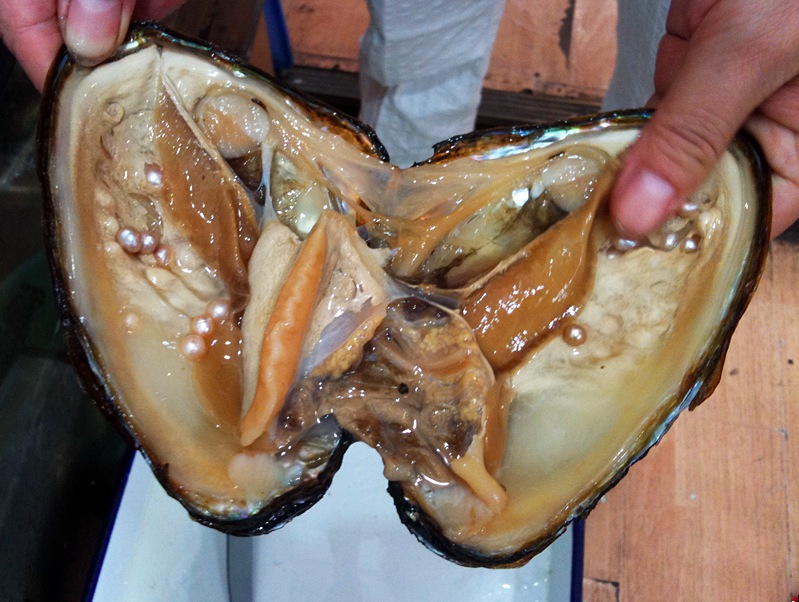
Natural pearls are rare as perhaps maybe 1 in 2,000 pearl oysters contain a natural pearl. They are formed when the pearl oyster reacts to an irritant by coating it with nacre, the shiny iridescent material found on the inner surface of the shell. Natural pearls are usually small, of various colors and irregular in shape. The high value of natural pearls led to the creation of pearl fisheries in nearly every part of the world where pearl-producing mollusks were found. Most of these pearl fisheries were short-lived because the fishers soon over-exploited the natural stocks.
Prompted by the high value and scarcity of natural pearls, Japanese researchers developed methods that brought pearl production under the control of humans in the early twentieth century. These “cultured pearls” are generally larger and of a more consistent size and color than natural pearls. Producing cultured pearls depends on a surgical procedure called grafting, which entails surgically implanting an artificial nucleus (shell bead) into the tissue of a pearl oyster. The oyster then secretes nacre around the nucleus. After several years of caring for the oysters, the cultured pearls are harvested.
Several species of pearl oysters are cultivated for pearl production. This manual focuses on the Black-Lip pearl oyster (Pinctada margaritifera). Black-Lip pearl oysters are the most common species of pearl oyster found in the South Pacific islands. The Black-Lip pearl oyster is distinguished from other species by the dark, iridescent nacre found on the inner shell.
Pearls produced by Black-Lip pearl oysters are known as “black pearls” or “Tahitian black pearls”. Black pearls are large, usually over 7 mm (0.28 in) in diameter and may be as large as 22 mm (0.8 in). Note: Pearls are always measured in millimeters within the industry. The nacre and pearls of Black-Lip pearl oysters are generally black or gray with shades of blue, green, silver and pink. Most black pearls are produced in the sheltered waters of the atolls of French Polynesia and the Cook Islands, although Australia, Indonesia, the Philippines and the Western Pacific Islands have growing black pearl industries.
Source: The Basic Methods of Pearl Farming
The Cultured Pearl Market – Grading and Buying
The price of pearls has a greater spread than most other commodities. Cultured pearls like this were probably grown in the Yangtze Delta in a small brown pond with the mussel lashed to net, hooked to a Sprite bottle for later retrieval.
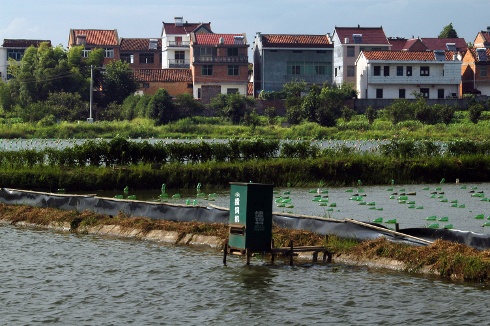
After 2 to 4 years the mussels are dredged up out of their mesh/sprite bottle frame and a bunch of dudes go to work shucking them.
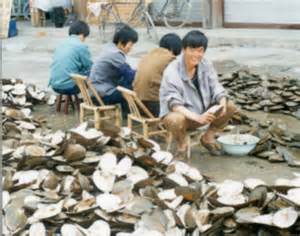
From there, literal tons and tons of pearls are shipped to sorting warehouses. The farmers are usually paid a spot price for the goods – seldom will they get paid true value if one of their pearls is AAA+ grade. Sorters will grade the pearls by color. Usually these fall on a spectrum between dark pink and snow white. On a shiny-ness of dull matte to mirror sheen. And on a roundness spectrum of potato to a neutron star (pretty damn round).

The final stage of sorting is so precise that men can’t do it. Most women can’t do it. In fact, only girls between 18 and 22 have keen enough vision and color sensitivity to sort the pearls between two nearly identical shades of ‘white-white-pink-white’ and ‘white-white-white-pink’. By 23 most of their vision is just off enough that the move on to a different position. If you think I’m bs’ing, you can take this test – if you get 100% in under 4 minutes you can qualify as a tier 4 sorter. There are 3 tiers above you. If not, well, there are 100 girls in line behind you willing to give it their best.
The slightly pink, slightly round, middle of the road pearls are nearly worthless and fobbed off to cheaper stores for cheap jewelry or given away to tourists as a souvenir.
Pearl fashion tends to swing wildly between two extremes: “perfect, identical, round, powerful” made famous by Jackie O and in style with Angelina Jolie and Condoleezza Rice vs. the more floral, feminine, rainbow/pink, odd-shaped pearls wore by Katherine Heigl and Emma Watson. If you’ve studied music, you can think of the former style as ‘classical’ and the latter style as ‘rococo’ ‘baroque’ – which literally means “odd-shaped pearl” and during the era that style of music was written in, those weird looking blister, pink pearls were all the rage.

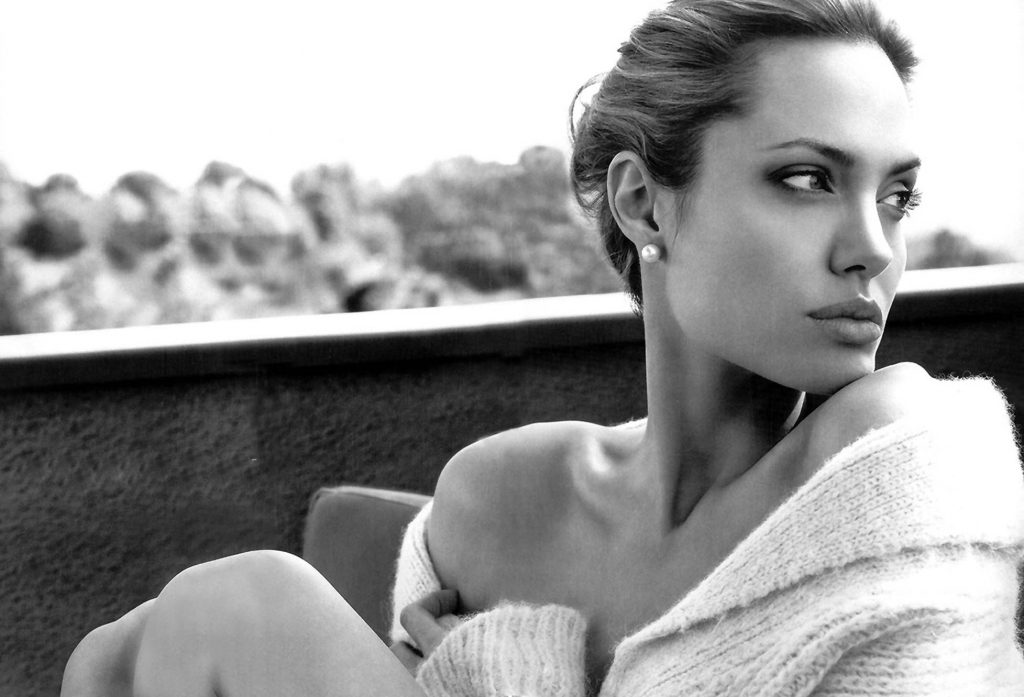
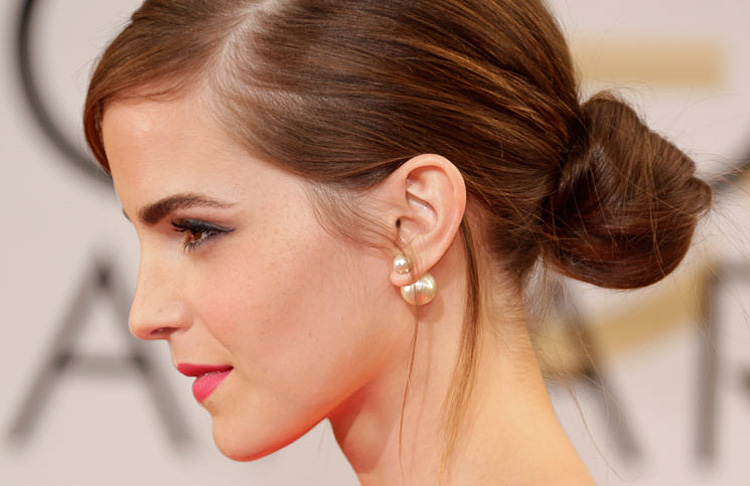

Frequently what is popular in one location around the world is out of style somewhere else. There is a warehouse built like an airport outside of Zhuji with 3 or 4 thousand different pearl vendors. They will cater to all styles, budgets, and buyer preferences.
The mussels above are infused with a starter seed. Think of it as a rough piece of shell ground into a ball. Depending how big or small this seed is one can control for more or less roundness. In theory the most valuable pearls are those that are perfectly round with a perfectly small seed (i.e. none). In practice, this only shows up on x-ray. Even in nature, pearls form because of the introduction of an irritant (though not usually sand, as is commonly thought). It’s roughly analogous process if say, you got a cut on the inside of your mouth and rather than just heal it, your bodies response was to build a tooth around it using successive layers of enamel. This happens once in a while in the wild with oysters (though not all the time) – when one moves to a farm style operation this happens to you 25 times over. If that sounds kind of disturbing, I don’t suggest you read up on the dairy industry.
I guess in theory you could make pearls using any shellfish that swallows dirt for a living but the mussels above are selected because they are so huge, hearty, and you can get up to 25 seeds in there. Something similar happened in the Banana industry like 70 years ago when (for a couple of reasons) we switched from tasty Big Mike bananas (oysters) to blander, heartier Cavendish bananas (mussels). Except Cavendish banana trees are 2 meters tall vs Big Mikes which are like 7 meters. If you climb trees for a living, smaller is probably better. With pearls, it’s the opposite.
One used to tell the difference between “real” pearls and “fake” ones by rubbing them against your teeth. Real pearls would have a rough texture like sand paper that you could hear and feel as it passes over your teeth, fake pearls were made of plastics or resins and felt smooth. This doesn’t work so well anymore as one can make very cheap, very large pearls by seeding these mussels with a large “nacre” and getting a very thin coat of rough, sandpaper-y stuff. A thin layer will have less ‘luster’. Think of that classic restored muscle car with five layers of clear coat over some candy-apple, metal flake paint vs the same model rusting away in the junkyard that just got a rattle can spray job. Luster may be a small detail in pearls but correlates strongly with quality.
Color is another metric that pearls are graded on. Depending on styles, pink tend to be more expensive than white. Pearls may be bleached or dyed and reduce price. Again, it’s a commodity market with millions of tons of product moving through each year – anything and everything is done to these guys. The less manipulation the more valuable. The bigger growers have gotten better and better at controlling for quality and size that over the past three years shockingly farmed pearls are now of a higher natural quality than wild pearls. Yay, science. In your face, nature.
Similar to Diamonds, if there are any imperfections, say a black spot of sand in an otherwise pink field, it can sink a pearls value from $80 to $2. Also like diamonds, pearls have other applications than just decoration. There is a legend, that when Pope John XXIII sent Michelangelo’s Pieta to the 1964 New York World’s Fair the statue was crated and cushioned not by millions of polystyrene balls but rather…pearls.
One of the stores I went to had four necklaces made with about 50 pearls each on display made to the various grades (A, AA, AAA, AAA+). Prices were $1, $10, $100, and $1000. It’s easy to discard the $1 necklace right away. The $10 and $100 necklaces one could not easily distinguish when they were on display. It’s apparent enough after picking them up and running them through ones hands for about 10 seconds. But between the $100 necklace and the $1000 necklace? I couldn’t tell the difference. To me they looked identical, weighed the same, had the same luster, roundness, etc. Feeling a bit impish, I put them back down on the counter in order of price ($1, $10) but then swapped the $100 and $1000 necklaces. When the sales girl went to hang up the pieces, she didn’t bat an eye rightfully placed the $1000 necklace back on the correct position.
Some people can tell.
Where To Buy Pearls Wholesale
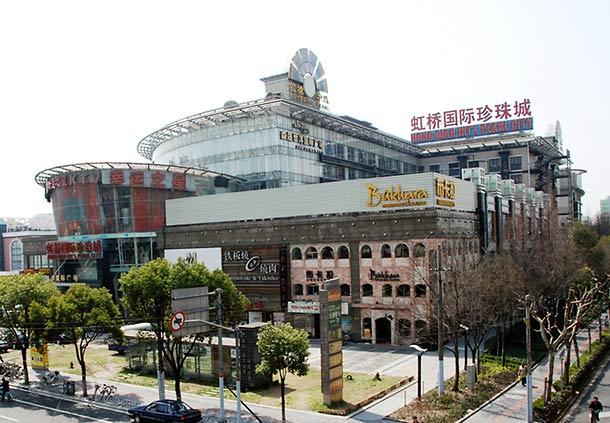
1) Zhuji Pearl Marketplace outside of Zhuji city, Zhejiang provence is ground zero, but it’s really, really out of the way if you’re not in the region for work. As a side note you can buy a necklace from one of the jewelers up front or ‘unstrung’ pearls from the vendors in the back. ‘Unstrung’ is something of a misnomer. They are drilled and hung on a line but not made into jewelry. A group of 5-10 together is called a hank. I don’t recommend buying ‘unstrung’ pearls – they are much cheaper but it will cost you double what you paid if you bring them back to your country to have them ‘strung’ at a jeweler. ‘Stringing’ involves adding a clasp and tying a knot after each pearl in the necklace so the pearls don’t rub and if the necklace breaks the little suckers don’t go everywhere. It’s been common practice for maybe 500 years but something movies and comics usually get ‘wrong’ – probably cause they’re made by dudes who don’t know better. Now you do.
2) Hangzhou (China’s original capital city) will have ok prices as it is the largest city close to that market. The touristy part of town will give you decent prices but low selection. That said, Hangzhou is great and is a mellow kind of place to visit. Highly recommended given how intense everything is in the other big Chinese cities.
3) Shanghai is even further away than Hangzhou, but is still part of the same greater region. It has a pearl market which makes for a nice souvenir if you’re just hitting the highlights. It’s ‘expensive’ for pearl market prices but still 1/2 to 1/4th what you pay elsewhere with considerable more selection.
Credit: deimodos
Additional reading:
Tears of Mermaids: The Secret Story of Pearls
- About the Author
- Latest Posts
I strive to paint vivid landscapes with my words, bringing the magic of far-off lands and enchanting aromas to life for my readers. Combine passion for exploration and the art of gastronomy in an unending ode to the senses. When I’m not traversing the globe, I find solace in the earth beneath my fingertips, tending to my garden and working on projects around my verdant oasis. MK Library serves as a beacon, guiding fellow travelers and homebodies alike to embrace sustainability, nurturing both our planet and our souls with purpose. Full Bio.

